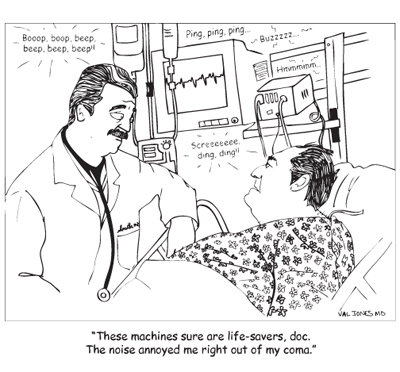August 3rd, 2009 by Happy Hospitalist in Better Health Network, Health Policy
No Comments »

With regards to a compromise by Blue Dog Democrats on setting the rates for paying doctors:
Waxman’s committee resumed work Thursday, with the goal of finishing Friday, after a week-and-a-half delay caused by objections from fiscally conservative Democrats. That rebellion was quelled with an agreement Wednesday that would protect more small businesses from a requirement to provide insurance to their employees, and restructure a new public insurance plan so it could pay higher rates to doctors and other providers, among other changes.
What did the the other Democrats have to say about that?
“This agreement is not a step forward toward a good health care bill, but a large step backwards,” 53 Progressive Caucus members said in a letter to House leaders Thursday. “Any bill that does not provide, at a minimum, for a public option with reimbursement rates based on Medicare rates — not negotiated rates — is unacceptable.“
Let me get this straight. In a world where Medicare and Medicaid pays less than cost, these Democrats want an option where doctors have the opportunity to lose money for every patient they take care of? If negotiated rates are unacceptable, exactly how is the Medicare rate acceptable. There is a reason why many Medicare and Medicaid beneficiaries cannot find a doctor to take care of them. Because the non negotiated rates are unacceptable.
Perhaps our Congressmen and women would like the 300 million Americans to take a yearly vote on the value of their service to this country. No negotiation. Majority salary wins. You just may not like what your constituents are offering you. And you just might quit. How’s that for unacceptable.



*This blog post was originally published at A Happy Hospitalist*
August 3rd, 2009 by EvanFalchukJD in Better Health Network, Health Policy
No Comments »

I thought everyone knew the major goal of health care reform is to control spending.
Then why are Democratic leaders proposing changes that would outlaw some of the most successful cost-savings programs in the country?
Today’s The Hill reports on the new strategy to attack insurance companies as “villains.” No doubt, health insurers have a bad reputation and have done plenty to earn it. As the Hill reports, the message is going to be that the reform plan will lead to “capping what [insurers] can force you to pay in out-of-pocket expenses, co-pays and deductibles.”
But for at least half of Americans – those who work for large and mid-sized companies and their families – their “insurer” is actually their employer. And many of these employers have been using out-of-pocket expenses, co-pays and deductibles to improve employee health, and reduce the cost of care. They are creating strong wellness programs and creating financial rewards and penalties, all based on employee participation.
As I wrote in April:
Companies like Safeway, Wal-Mart, Michelin, General Mills, Marriott and so many others have implemented programs to create a “culture” of wellness among their employees and their families. Leaders at these companies constantly talk about living healthy lifestyles, and are paying to make it happen. At Michelin, employees get a cash reward for getting a biometric screening and for participating in company-sponsored health improvement programs. It even started work-site exercise programs, including yoga (although it found that with a workforce that was 82% male it had to call its yoga classes “strengthening and conditioning”).
General Mills published wellness statistics about its different plants and found that the workers in each one competed with the others to get the best scores for BMI and other important health metrics. Marriott found that by eliminating co-pays on drugs for certain chronic diseases, more employees followed doctors’ orders to take them, and although Mariott’s drug costs went up, overall health expenses went down. Abbott Labs brings in motivational speakers and set up weigh-in kiosks in its offices that took pictures of employees as they got healthier so they could see the difference. All of these companies reported on enthusiastic participation, and a sense among employees that their company cared about their well-being.
Safeway has taken this idea even further, and redesigned its entire benefits plan around this concept. Employees who live unhealthy lifestyles and refuse to participate in wellness programs pay more for their health insurance — just like a bad driver pays more for auto insurance. Safeway did this in a highly positive and motivational way, making available a wide array of free services to help employees be more healthy and enjoy lower health premiums. The results have been dramatic: Steve Burd, Safeway’s CEO reported at the WHCC that Safeway’s health costs have been flat since 2005.
This Safeway model – creating both soft and hard incentives for employee health – is one of the fastest growing trends in plan design. The idea is to give employees control over their own health care, including financial responsibility. When this happens, employees live healthier, look for value in their health care spending, and overall costs are lower.
And yet the statements from the Congressional leadership suggest they want to severely limit these kinds of innovations.
It may be good politics to demonize the insurers, but we should realize that “insurers” aren’t exactly who we think they are. Health reform that stifles the innovation that’s working at America’s best companies is no reform at all.
*This blog post was originally published at See First Blog*












